This is the day I’ve dreamed about for nearly 8 long years. Today is the day that my life’s mission takes shape and my book, Turn Your Passions Into Profits, releases. Come join me today for a very special episode celebrating my book launch.
Click Here for The Written Transcript of This Episode
Tired of having a small (or no) email list? It’s time to start growing your fast and easy! Grab my new book Turn Your Passions Into Profits now and watch our subscribe count soar!
Links Mentioned in this Episode
Turn Your Passions into Profits Book & Exclusive Bonuses
Text me at 260-217-4619
Don’t Miss An Episode – Subscribe Below
Previous Episodes of The Affiliate Guy
Special Episode: Highlights from My Whirlwind Book Tour
The Untold Stories from Turn Your Passions Into Profits (Behind The Scenes Peek at My Book)
Ten Resolutions for Affiliate Marketers and Affiliate Managers
2023 Affiliate Marketing Predictions
Creating Your Ideal Customer Avatar: How to Get Crystal Clear on Your Audience Part 2
How to Get Crystal Clear on Your Audience Part One
The Proven Path for Building a Rewarding Online Business
Book Launch Party: An Interview with Matt About Turn Your Passions Into Profits
So this is the day I’ve dreamed about for nearly eight long years. Today is the day that my life’s mission takes shape in my book Turn Your Passions Into Profits releases. Come join me today for a very special episode celebrating my book launch.
So welcome. This is an unbelievable day for me and I don’t know even though I don’t know how to put it into words, and I really struggled with what to do with this episode because I don’t know how to put it into words.
So I invited my right-hand man, our operations manager, Robby Miles. We’ve had him on before and he’s interviewed me before and like, you know what, let’s do that again. Let’s do that again as we celebrate the book release today for Turn Your Passions into Profits.
So I invited him on to ask me some kind of behind-the-scenes stuff to ask me about some parts of the book that maybe I haven’t been able to share before. And it ended up being just a great interview, a great opportunity to share some of the vision for the book, how it came to be and all that stuff. So I hope you enjoyed it.
Robby and I ended up talking for almost an hour. He interviewed me again, which is pretty amazing. So we’ll get right to that. Make sure you go check out the book at Passionsintoprofitsbook.com. We got tons of exclusive bonuses there.
Even if you’re listening to this after launch day, after January 10, we still have tons of amazing bonuses there for you at passionsintprofitsbook.com make sure you go grab a copy, and here’s my conversation with Robby.
Robby: Hey, everyone. Welcome to the affiliate guy Podcast with Matt McWilliams. I’m Robby Miles, his operations manager, and today we are celebrating his book launch Turn Your Passions into Profits. Matt, first off, congratulations. Not only writing a book but launching a book to the world. I’m so excited for you. What are you feeling right now?
Matt: I don’t know. For anybody who’s ever done it, I was thinking about this the other day, and this is just kind of how my brain operates. My life expectancy is somewhere in the low 80s, right? I will have spent 140th of my life writing or preparing for the launch, marketing those things that go into this 140th of my life, like doing this. It’s kind of crazy to think about that and so it’s a surreal feeling. Like we hit number one in a bunch of categories on Amazon, beating Bernie Sanders.
How in the heck he ended up in the business category on Bards and Nobles is beyond me, but he’s there and that’s a pretty big name. Everybody’s heard of Bernie Sanders, at least in America, and to be beating somebody like that, it’s a testament to the work that the whole team has put in the publisher, our team, and everybody that supported it. I mean, I know so many of you listening, you’ve already purchased a copy or multiple copies.
In my new book, Turn Your Passions Into Profits, I show you exactly what types of lead magnets actually convert and lead to explosive list growth. Grab your copy here!
Some of you have been assigned a copy of the book early because you purchased five or more. That offer is still on the table, by the way, guys, you may have already bought one or none. If you purchase five copies, we’ll send you a signed copy as well so you can go buy five through your favorite retailer, and then we’ll send you a signed copy.
We can talk about how to do that later but I know so many of you have those and all that. All of you have supported the book. It’s been amazing. It’s kind of a surreal experience, to be honest with you.
There’s nothing like that day when I got the box in late October and they told me that I wouldn’t get it until early December. So I got this box and I’m like, well, that’s really large for a bag because I was expecting a bag that we put on our Mower that sucks all the leaves up and all that.
We needed a new one. The other one had broken and we needed a new one. I ordered it and it said it’ll be there at 02:00 p.m. that day. Well, it’s 01:00 p.m. I’m thinking it’s the bag. I open it up, it’s not the bag.
So this whole thing I even told people it was like, oh my gosh, it was ruined. We were going to get the box and we were going to do a big production with me opening it up. And I was going to act all like, oh my gosh, it’s amazing. I still waited to actually touch the book and do all that and I did do a video.
I know you saw it, but it kind of ruined that because I just thought it was a stupid bag for my Mower. And instead, it was the two years of my life, my passion, my goal, all these things wrapped into one surreal experience. And I’m thinking, I’m opening a bag.
So I literally had like a burger in one hand, and I was like, cutting it with a pair of scissors and I looked in like, whatever. Oh my gosh. Needless to say, I never did finish that burger. I was too excited.
Robby: That’s awesome. Well, today, to celebrate your book launch party. I just want to do this interview with you to get some behind-the-scenes details and really just go between the pages as if you were in the book. So everybody by this point should know that the title of the book is Turn Your Passions Into Profits.
So my question for you is, what advice would you give an entrepreneur who only has one part of that equation?
How can someone create a business that’s driven by their passions but still makes a profit?
Matt: This is the very beginning of the book. We talk about the kind of two types or three types of entrepreneurs. The first type is and I’ve been in both of these types. I’ve actually been all three. The first type, Robby, is that type that loves what they’re doing. They’re passionate about it. They’re changing the world. They’re having an impact. They have influence.
It was me when I started my first blog at mattmcwilliams.com back in 2012, and I know that’s how we first, I think, connected. I was talking about leadership and personal development, and I was having an impact on people. I would get an email every week, Matt, you’ve changed my life. You’ve saved my marriage. You’ve helped me be a better leader. You’ve helped me start a business to get the mindset right on that. You’ve helped me do all these things. I’m like, that’s awesome. Oh, my gosh. We get blog comments. This is amazing. Thank you!
I started doing this and all these things, and I’m like, that’s amazing. Here’s the thing: My kids soccer, we pay about $2,000 a year for each of my kid’s soccer. They don’t take blog comments or social media comments or positive emails as a form of payment. When we had a mortgage, I tried to be like, Hey, can you knock $300 off her mortgage? This person said I changed their life.
And they were like, no, they don’t take that as a form of payment. That doesn’t put gas in your tank or it doesn’t heat your house, doesn’t do any of those things. So you’ve got to be able to have that flip side, which is the profit side. So a lot of times what happens is people end up going to the other extreme. They’re making great money.
Six, seven figures, whatever it is, whatever is great for them, it might be $75,000 a year for you, but they’re making great money. But they hate what they’re doing and I’ve been there too. I was a golf instructor, and, man, I was 22, 23 years old, making well into six figures. But I hated every single minute of teaching golf. I was spending 45 to 50 hours a week hating what I was doing just to make amazing money.
And if you’re ever going to do that, I’d say your early 20s is a good time to do that, because I didn’t have other responsibilities, and it wasn’t keeping me from my family and stuff like that, at least. So it was a great time to do it but still, it was a soul-sucking time.
And I remember when my dad freed me, or as he said, fired me, when he freed me from that burden, I actually didn’t go back to work doing anything for about six months because I just needed time to decompress from all the stress and the hating what I was doing.
So the question, of course, is how do we marry those two things? How do we get the best of both worlds? And ultimately, that’s what the book is all about, is being able to have passions and profits. Because if you don’t have that second piece, the profit side, the passion doesn’t matter because you’ll burn out because you’re not making any money.
And if you got the money piece but don’t have the passion side, you’ll burn out because you’re just waking up every day going, why am I doing this? There’s no energy to what you’re doing. Just like it was with me as a golf instructor, I woke up, and sure enough, if the golf school started at 09:00 A.m., I showed up at 8:58 at 5:02 when it ended, I left and I didn’t want to be there. So we want to be able to have both of those.
Robby: That’s awesome. So I’m going to pull a couple of ideas from the book. One is that you share quite a different way of thinking about leadership than a lot of traditional leadership models out there. So what misconceptions do you hear about leadership? What’s floating around out there? And what do you say to people who don’t think they’re qualified to be this thought leader, as you describe in the book?
Matt: Yeah. So when you ask a question like that, Robby, it is because you don’t know the answer. I want everybody to know. Again, this is meant to be behind the scenes and we’re celebrating. Robby has had to listen to so many interviews, and he knows the manuscript of the book. And more important than that, he was in the core. I said it, I think, two episodes ago.
So I talked about kind of where this book originated, four, almost four years ago, three and a half, four years ago. So he’s heard this evolution, and he’s heard what I’m about to say. He has heard me say this. I’m going to go on the low end, Robby, 50 times probably.
Robby: I was going to say on the low end, like a thousand times. I just listened to like 50 podcasts yesterday trying to find clips.
Matt: Ooh, for the last episode, you know, for the last episode where you guys got to hear some clips from some of the tour. And so, yeah, I mean, the idea here came about like, I don’t want to just say, here’s what the book says, and say the same thing that I’ve shared a million times. The idea came about for my own kind of imposter syndrome.
My own like, well, when I was first starting to teach online marketing, I wasn’t making seven figures. I was working with a lot of people who made seven figures, but I wasn’t making seven figures. And I wasn’t one of those guys who’s like, well, gosh, I’m some sort of an expert. Yeah, I’d been affiliate manager of the year a bunch, and I knew what I was doing, but I still had that imposter syndrome of like, well, who the heck am I?
And one of the things that I realized I had this just the analogy that I share in the book, which I’ll share here, but the analogy I share in the book is like, you only have to be one step ahead of people, right? There are a lot of those misconceptions about leadership. And I tell the story about imagine you’re on a hike and there’s a particular height that I’m thinking of it’s in the mountains of Tennessee that it’s about probably only a mile up and it feels like 2 miles.
It’s about 2 miles up. Then you go 2 miles along the ledge and you go down about another again, it feels like 2 miles, but it’s probably only a mile. So I think it’s roughly a five-mile, six-mile hike. And when you’re up on the height there, again, you’re 3000, 4000ft up. I think once you cross like 100ft up, it really doesn’t matter how far you’re up if you fall, you’re going to die. And it’s one of those and there’s a couple where you can’t even walk with your feet next to each other. You will literally fall to your death and I’m always picturing that.
So picture that in your mind when you’re on a hike with that guy and the super fit friend, the one I write about that always wears bike shorts for no reason. Like he’s at a cookout, he’s wearing bike shorts, he jogs in place at stoplights. He’s been fit for 30 years. You don’t have to ask him if he does cross-fit because he’ll tell you that he’s done it six times this week and smells like soup mix all the time. And he’s up 2 miles ahead yelling back to you like, hey, hurry up and watch out.
Watch out for the what? What am I supposed to watch out for? I don’t know, because you’re too far up ahead of me. So when I thought of that analogy. What I was getting at was my own imposter syndrome of I’m not the guy that’s 2 miles up ahead. I haven’t moved twice as fast as other people, so I can’t be the guy who’s the advice guy. I can’t build a platform around that. And I realize, wait a minute, I don’t have to be.
Some of the people that I’ve learned the most from are the people who are one step ahead of me. Maybe they’ve gotten to two, or three steps ahead of me, but they’re not miles ahead. Have I learned stuff from the people like Kevin Harrington that’s practically a billionaire, invented the infomercial, and sat at his kitchen table for a couple of days?
Did I learn stuff from him? Absolutely.
Did I learn more from him? People always ask me that.
What did you learn to work with Kevin Harrington?
What did you learn working with Michael Hyatt?
What did you learn working with Rich Schefren?
What would you learn working with Jeff Walker and coaching Tony Robinson?
I’m like, no more than I learned from my friend Jonathan Milligan, who’s at the same level I’m at, no more than I learned from Brian Dixon, who’s at the same level I’m at, no more than I learned from our teammates, who many would say are one step behind me. You know, I’m leading them. I’ve learned just as much from those people as I have from the Kevin Harringtons and the Jeff Walkers and the Tony Robbins of the world.
So when I reframe that for myself, then was able to teach it, that’s kind of the backstory around. That’s where that came from. You just have to be one step ahead. And ultimately, as I say in the book, it’s about a choice. Leadership is a choice. Your followers need you to lead them. There are people out there who need you to lead them. Will you make the choice to lead them? That ultimately is what it comes down to.
Robby: I really like how you also brought up that you can learn from anywhere. If you have that learner’s mindset, you’re going to be a leader as long as you share what you’re learning. So that’s great. That’s great.
Matt: That’s something I have not talked about this in any of the other podcasts, and it’s all the way in step ten of the book, the idea of learning more because I share a framework for creating more content. It’s called the Ice Framework. Idea creation and engagement. Right? So first is the idea phase and one of the ideas I share is to consume more content, but not how you think. And so I say, like, if you want more content ideas, you need to consume more content not with the mindset of learning, but with the mindset of sharing.
And so I share the story of there’s this biography of Confucius that I was listening to, the Chinese philosopher and fortune cookie writer. I was listening to this biography, and it talks about how, like, I’m going to butcher the pronunciation. But the Eastern Zhou (Zhou, I believe) Dynasty, it said, started to decline around 600 BC. Then it talks about some other stuff, and then it says it finally fell in 296 BC. I was like, Wait a minute. That’s 304 years of decline. It took 300 years to fall apart. Like, the Soviet Union went from being our biggest enemy in June and not existed like, two months later.
We watch Cous Happen live on CNN and Fox News these days. We watch governments go from powerful to nonexistent in a matter of hours, sometimes, let alone days or weeks 300 years. And I was just like, I took that and went, oh, my gosh, the world is moving so much faster. We need to move fast with our business and blah, blah, blah, blah. And I talk about how I came up with that example, but the idea of, like, I can learn stuff. I just listened to a book the other day about how to start a blog. A six-hour audiobook about how to start a blog.
I’ve been blogging for 15 years. I know how to start a blog. I didn’t listen to it from the standpoint of me wanting to learn how to start a blog. I listened to it from the standpoint of I have people in my audience who want to learn how to start a blog. What are some of the things that I could share with them to then be able to help them with the next step, which would be monetized through affiliate marketing? But even I learned a couple of things. I learned a couple of things from this book.
In this journey of learning how to market a book, I knew what I knew, but I didn’t know what I didn’t know. And I listened to or read probably 40 to 50 hours worth of content around marketing a book. And some of them like, oh, my gosh. Who wouldn’t know that’s what my brain is? And I’m like, no, Matt, shut up. Get what you can out of this.
To get started with affiliate marketing the right way, download my free quickstart guide to affiliate marketing. Grab your copy here!
And these are people who are like, you know, their qualification for writing this book about selling books is they sold 500 copies. And I’m going, wow, I’m going to sell a lot more than that. So that part of me is going not in an egotistic way, but how am I going to learn anything from this? I’m like, no, they know one thing. They know one thing that I don’t. Let me glean that from them. So, yeah, it even ties in with that.
Robby: I love that. So kind of speaking of being a thought leader and in the vein of celebration, you’d already mentioned, that your book hit number one. You’re beating Bernie Sanders, among other people, some of whom you personally know. And congratulations again, by the way. That’s awesome.
Matt: I may or may not have texted them.
Robby: Can you share a little bit about how this book became a passion for you and kind of a little behind the scenes of your writing process?
Matt: Yeah, I know you were a big part of that for me. It was one of those things I’ve been talking about it for so stinking long. Not this exact title. In fact, the title was not mine. The original title of the book, as we proposed it to publishing companies, was The Passion to Profit Path. Matt Holt, who is our publisher has Ben-Bella being distributed by Penguin Random House. Matt Holt is the guy there. If you look at my bookshelf, he’s published like 15 or 20 of the books on my bookshelf.
Guys like Gino Wickman and David Finkel and others. I know for me, we’re big fans of Gino Wickman, you, and I. That’s something in 2023, when we get past the book launch, like, we’re going to fully implement all of Gino’s stuff. That’s a whole nother thing. And I’ll be sharing all that stuff in, like, Q Four of 2023 with you guys.
But when I talked to him and he was like, I’ve got a better title, and he said, what do you think? I was like, that’s it. So if you look back to the process, like, I had this vision for okay, a book that teaches the path from basically, literally zero to how do we create a profitable business?
This is not how you build a seven-figure business book. If you want to go from zero to seven figures, this is the first third of it. There’s a lot more after that. I may or may not be writing Sin after this one. Just a little hint there. This is not that. This is not how do you build a team and go from making half a million a year to 5 million a yearbook.
I’ve had plenty of people who run even low seven-figure companies that said, one the other day said, matt, the story you tell about your dad in step four, about converting visitors into subscribers, I’ve shared it on the podcast. I’m not going to share if you go back a couple of episodes, I talk about my favorite stories in the book, and that’s one of them.
But he said, I got so clear on my lead magnet when I heard that story, and you talked about the quick wins and you talked about those things, he said, Matt, oh my gosh. I went back and re-engineered my lead magnet, and I doubled my opt-in rate.
This is a guy who’s bringing in two to 300 leads a day that doubled his opting rate from a book that’s written more for beginner to intermediate people. So yes, they can learn something. That’s not who I wrote the book for. I said, I’ve got to come up with this path, and I came up with the path, and we taught it, and we refined it, and I taught this live. What’s your guess, Robby, 35, 40 times did I do it live?
Robby: We were doing it sometimes twice a week.
Matt: I remember doing back-to-back, so I will just say 50-plus times I think I taught this. That seems about right. I taught it live, and every time I taught it live, I added a story. That story of my dad that I shared a few episodes ago. I set it off the cuff and we all went, that story was amazing. You got to add that to the script. And then there were a couple of areas where I was like, that’s not refined enough.
There were a couple of areas where people were confused. So I unconfused it and got it better and better and better. And then eventually we got to the point where I did it kind of the same, like 15 straight times and we went, okay, it’s dialed in. So then for that, I took that as the basis for the book. If I had kept it like that, it would have been a 17 to 18,000-word book, roughly a nice little pamphlet. So I expounded upon it. I added some additional stuff.
We addressed some more of the mindset side even, like the concepts about leadership. We added a page where it’s got a leadership commitment in the book. At the end of step two, which is Commit to Leading, we’ve got a leadership commitment that says, I and you put your name in commit to being a leader. I am uniquely qualified to lead.
For example, dads who struggle with work-life balance because I’ve been in their shoes. I commit to being your Avatar’s Name guide. Then it goes on to say, Avatar name needs me. He or she needs me at my best. When I am tired, overwhelmed, or frustrated, I will remember Avatar’s name and turn my focus to doing whatever it takes to help him or she achieve success. I’m a willing leader committed to helping those I am called to help. I am equipped. I’m qualified. I am ready. And there’s some more in the middle, of course, but it’s a one-page commitment. Then you sign it, you date it.
You’ve made a commitment to being a leader at that point. That’s not in that presentation. The whole chapter is about championing their cause. We briefly touched on it in the presentation But I start talking. I mean, I get into some stuff in the book oh, my gosh. About revolutionary leaders, That is just the stuff I couldn’t teach when we were doing it live.
So we took this 1-hour presentation and turned it into what will probably be an eight-hour audio book when the audiobook is finished being recorded, which I’ve heard was happening next week. So I’m excited about that. So that was the process for the genesis of it and then from there, I started writing. I just made a commitment. I am going to write six days a week, every day, six days a week, Monday through Saturday, and the majority of.
This book was written during the busiest season of my life. And I think I talked about it a few episodes ago, but I’ll share it again here. And I give all the credit to you because I came to you and I said, Robby, man, I’m at a loss. I don’t know what to do, because we’re in the busiest season ever.
We’re running a massive launch, and we’re scaling our company, and the agency is growing, and I’ve got all these other responsibilities, but I can’t write the book. But how do I do it? I can’t go to a cabin for a week and finish it. And you’re like, can you write for 20 minutes a day? And I was like, yeah. He said, Then write for 20 minutes a day, doofus. It’s not rocket science here. I was like, okay. So I set the timer for 17 minutes. I come down, I did it first thing in the morning. So the busiest season ever. But I still did it before I even made my coffee. I did it before I did any of my morning routines.
Because then if something in my morning routine happened to take a little bit longer or the dog needed something, that was the one thing I did, was I took the dog out, let them pee, and then put them in the crate for 20 whole minutes. I’m a terrible dog parent, right? And I came down 17 minutes. And then after the timer went off, I had three minutes to either finish what I was writing or make my notes for the next day. That’s a little tip there. Don’t ever start with a blank page. Oh, I’ve got writer’s block. I got a blank page. It is then don’t start with a blank page.
At least start with, like I would come down, and it would say, tell the story about your dad. Cool. For 17 minutes I’d write the story about my dad. It would say, Talk about the time that you learn this thing in college. Boom. I got it. Talk about building a culture. Got it. Like, I know what I’m writing the next day and subconsciously, it was working. My brain was working on that for the next 23 and a half hours. I didn’t realize it, but it was and I’d hit the ground running, and I was writing 5600 words in 17 minutes. It was insane.
Robby: I think that’s a great example for people who are just starting out. You can do something in as little as 20 minutes a day. You can do something monumental within that time frame. And you’ve proven that by the fact that you’re now sitting at number one. Like, how incredible that 17 minutes a day turned into a number one bestseller.
Matt: Yeah. I know.
Robby: It’s awesome. So what are some of the best parts and some of the worst parts of writing a bestseller?
Matt: The best part is actually something we’re probably not going to see for a couple of years. Our mission with the book, the objective is to have 20,000 people at the end of next year come to us and say, matt, I did it. I started my business, and I made my 1st $10,000 again. Will people make more? Absolutely.
There will be some people taking this two years from now, they implemented right away, and this year they’ll do $25,000, and then next year they’ll do 80. Okay, awesome. For most people, that’s not going to happen. I just want to paint a realistic portrait. This is not the make six figures and six months book. Probably not going to happen. But how do we build a long-sustaining business? And so our goal is for that to happen. Two years from now, we’ve got 20,000 people making $10,000.
So we won’t know for a couple of years what the best part is. The best part is going to be when that happens. The best part is going to be the emails and the messages saying, I did it. We’ve had one of those so far because as we’re recording this, news flash, we’re not recording this live, and it’s magically streaming into your podcast player. Like, we’re recording this a couple of weeks in advance.
We’ve had one of those from a lady who got an advanced copy of the book. And I can’t remember if I’ve said this on the show, so if I have guys, I’m sorry, but we had this lady who got an advanced copy of the book, and she interviewed me for her podcast. In the end, she’s like she started to break down, and she said, I got to tell you, this book is everything to me. Like, what do you mean?
What does that mean exactly, she’s like, a couple of weeks ago when I got the book, I was ready to give up. And I read this just because I was interviewing you. And I said this is probably going to be the last interview I ever do. I’m just going to quit my business. And I basically have a choice here in about a week whether to renew my business license or pay for auto insurance. In her state, her business license is pretty expensive it’s like $1,000.
I was crazy in and of itself, but that’s a whole different story. And she said, I had a choice between auto insurance or paying for my business license. And after reading your book I just decided, you know what? I can walk for six months. I was like, Whoa, that’s one person early so we’ll have 19,990 and more. That will be the best part. I don’t know I say there’s the worst part because it’s like, yeah, it’s been busy, but I enjoy being busy.
I’ve done over 100 interviews. I enjoyed every one of them. Probably the worst part is just the inability for me to do the other things that I want to do in our business, like be a good leader. I’ve been a mediocre leader, but hopefully better than average, but mediocre compared to where I set the bar. And it’s in part because I’m unavailable four or 5 hours a day doing interviews and stuff. So, admittedly, as much as I’ve enjoyed this, I’m looking forward to being able to do that a little bit better. On the flip side of this, that’s probably been the worst part.
Robby: So what do you say to people who grab the book? They get a copy of it, open it up, read through it, and they’re not really sure what their passion is Or there are also people out there who have more than one passion. They’ve got half a dozen passions. What do you say to people like that?
Matt: Yes. So if you get through step one, to clarify who you helped clarify your passion and you’re not sure, reread that chapter. Go through the three questions. I’ve shared them in past episodes. Right? Number one, what is it that people are always asking you for help with Right? Number two, what is it that people say is interesting about you? Number three, what is it used to struggle with but now you’re good at Right?
And I share examples in the book, of course, and I’ve shared them in past episodes. Reread it and really go through it again. One thing I don’t say in the book that I wish that I had, it was one of those kinds of like, we had to cut. There are a couple of things we had to cut, obviously, because we had 35, 37,000 words we had to cut. The first one is, hey, go through those three questions with some other people in your life.
Hey, what is it that’s really interesting about me? Oh, really? I never thought of that. Or you get five people who all say the same thing. It might be on to something there. What is it that people are always asking you for help with? Like, if you could pick one thing that I was your go-to guy for, what would it be? Or your go-to gal, what would it be? And you ask for people to kind of come along with you on that journey.
That usually works if you’re still going, okay, there are two things. There are two things, and I really don’t know what it is. There’s actually an exercise that we had to cut out of the book and I think it was among the last 2000 words that we cut. And it drove me nuts that we had to do it. But it is it’s applicable to such a small percentage of the population that it was like, okay, we got to find something to cut. That’s going to be it and it’s an exercise. If you’ve got two or more passions, you’re really not sure what it is.
If you are ready to take your business to the next level and start an affiliate program, start with my free report, Your First 100 Affiliates. This report takes nearly two decades of experience, trial and error, and lessons learned about finding top affiliates in nearly every conceivable niche and puts them all into one report. Grab your copy here!
Very simple exercise. You take 20 minutes, just grab a yellow legal pad, and take 20 minutes. Doesn’t have to be yellow, could be a white legal pad, too, just here. But all mine are yellow. Could be purple. You know, just be weird. But anyway, take a yellow legal pad, set a timer for 20 minutes, and go, go.
And I want you to write down as many topics as you can. Think of things that people would want to learn or that people struggle with or whatever in that niche, in that passion. Just write, write, write, write. Doesn’t have to be, you know, ten ways to you don’t have to write titles. We’re not writing subject lines. We’re not writing the first sentence of an email. We’re not writing the name of a course or a podcast episode. We’re just writing ideas.
Like, for me, it would be like, okay, how to start an email list, how to get your 1st 100 subscribers, how to start affiliate marketing, why affiliate marketing is so awesome. What are some of the lies about affiliate marketing? How do you start an affiliate program? How do you find affiliates? boom.
I could write hundreds of those in 20 minutes. Take a 20 minutes break, go for a walk, and clear your head. Then I want you to take the next niche, the next passion, the next topic, and do the same thing 95 times out of 100 when I’ve done this, they get through the first one and they go, there’s no way I’m writing even half that many on the next one. And they stop.
Or they get through five minutes of the second one and they go, holy crap, there’s no way I’m done. I’ve written ten and I wrote 174 of the other ones. I’m done. Or they get in five minutes, they’ve already exceeded what they wrote on the other one.
And it’s so obvious, every now and again you’ll get somebody who writes 82 for one and 61 for the other, and they still kind of have to think, well, which one do I just really want to do? But if you’re still unsure after step one, do that. That’s how you get absolutely 100% clarity. Those three questions like step 199 percent of people will come out on the other side of step one with 100% clarity. But for the remaining 1% of you, do that exercise.
Robby: And if that doesn’t work, flip a coin, take action on one of them, and you’ll learn real quick if it’s the right thing for you or not.
Matt: Yes.
Robby: So I wanted to come back around to talking about leadership. You discussed a little bit about the revolutionary leaders, and you kind of hinted at that just a few minutes ago. Can you share a little bit about what’s so special about those leaders, and why you picked them as examples for entrepreneurs?
Matt: I picked them because, first of all, I wanted them to be historically relevant to everybody. I wanted them to be from history, first of all, so that they were timeless. If I pick somebody that’s alive today, and just to be clear, and like, two years from now there’s a scandal involving them, then oh, crap.
So that was kind of my first filter. Secondly, I wanted them to have had an impact on a worldwide impact above and beyond, just like, making money or something like that. I wanted them to be from various domains. So in the book, we’ve got Jesus and Mohammed. We’ve got Gandhi, Martin Luther King jr. Nelson Mandela and Steve Jobs.
So I wanted there to be one that was a little bit more recent. But still, he’s not going to impact the world anymore. And I’m going to go out on a limb and say there’s not going to be a scandal coming out on him in the near future, so we can look at him and say, okay, here’s the impact that he had.
And so for me, when we look at those revolutionary leaders, I’m looking at them and saying, okay, what were the common traits that they had? What can we look at in those leaders and say, okay, here’s what they all had in common? And so it comes from this idea. We want to champion their cause, right? We want them to be the hero of their audience. And so there are multiple steps there.
Number one is to make it clear you understand them. That’s something that if you look at those leaders, they did incredibly well. Probably the only one who might have struggled with that a little bit would be Steve Jobs. But even then, his famous quote from him was like, he said,
“I don’t care what they want. I know what they want.” -Steve Jobs
And in a way, it’s like, yeah, I understand you. I understand you better than you know yourself. Because of things like that, when the first iPhone came out and it didn’t have certain features, like, many people were like, I can’t believe that it’s missing this.
Oh, wait, I love that it doesn’t have that. I look back to the iPhone that had the home button. I know he wasn’t around for that, but it was like when I heard that it didn’t have a home button, my first thought was, that’s a stupid thing. Now I’m like, golly, how cumbersome was it to press a home button?
They took up all that space on the bottom of the phone. I know, it’s like, first whole thing. I’m just saying. But it was like, it’s weird, right? So we want them to make sure that it’s okay to be in their shoes. Can they relate to us? Gandhi was relatable. Martin Luther King Jr. Was relatable. The guy had been thrown in prison dozens of times, like, hey, I get it. If you go march, there’s going to be consequences. I get it. Jesus was relatable.
Probably the one person of the six who had every right to not be relatable, and was one of the most relatable. So it starts there, then we’ve got to ease their fears, right? You know, when I first was developing the content for this in 2018, I always talked about the Great Depression. And then as we were about halfway through that year of doing this, every week or multiple times per week, we had this little thing called COVID hit.
And when COVID hit, that became my example of like, okay, when people are scared, it’s almost unimaginable to think that anything could possibly be a solution. That’s what fear does to us. It completely cripples us. So these leaders that we cite in the book, ease those fears. They take the blame off of them. That’s the third thing.
And they absolve them from blame. They take the blame off of their shoulders and say, you know what? No, we’re going to put the blame goes on past solutions. The blame, it’s not about not taking ownership. It’s not like, you know what? Yeah, if you struggle with some things, it is your fault. But we want to take that blame off of them so that we can begin to make them see there could be a solution.
We want to spark their imagination. Nelson Mandela from prison said, imagine what life would be like in South Africa if there was no apartheid. Steve Jobs, you talk about imagination. I can’t think of very many people who had a greater imagination than him. He was like Walt Disney, but for technology. It’s amazing what they did. And then creating a common enemy.
We create a common enemy. With Jesus, it was the religious leaders of the time, right? With MLK, it was racism, discrimination, and police brutality. With Gandhi. It was colonialism. And to a certain extent, he also had a common enemy with his followers of violent resistance to colonialism. With Mohammed, it was basically everyone who wasn’t in submission to Allah who was the common enemy. With Mandela. It was apartheid. If you think about Steve Jobs, I mean, I always think of the 1984 Super Bowl commercial, right? It was the status quo. These were the common enemies that they had. And so we go on from there.
There are a bunch of others about how do champion a cause. But it came from studying, like, okay, what are these people have in common that led to them being considered timeless leaders that I didn’t have to explain in the book, who Steve Jobs was, or who Martin Luther King, Jr. Was, or who Jesus was, or who Mohammed was, or Gandhi or MLK. I write the name, and 100% of the people reading know all six names.
And then the last one that they do, there are some others in the book, but the last one they do is they show them the path. Yeah, they inspired their audience, their followers. They did all those things, but they ultimately showed them the path. Jesus showed the path to heaven, as did Muhammad. And Martin Luther King had a plan.
We’re going to do this. We’re going to do this step and then this step. And they’re sequential, like the book. It’s sequential. You don’t start on step four. You don’t go step one, then step seven, and then step two, and then step ten, and then bounce around. Now you go, 1234. And they laid that path out for their followers.
And if you study them if you study all of the people who’ve led revolutions again, Gandhi, Martin Luther King, Jr. People like that, it was a slow and steady step one, then step two, then step three, and there was a little bit of improvement, a little bit of improvement, and so on and so forth. And then eventually, it’s like, we look at the story of, like, apartheid in South Africa, and we go, one day, Mandela was free from prison and he was president. The next day, there were about 50 steps before that that people had to take to even get to that point.
Robby: Awesome. Thanks for sharing. That is the impact that can have on all of us as we start our own businesses. Well, I mean, naturally, the whole point of business is to make a profit from your platform, and one of the things you need to do is you need to know how to sell. But as any salesman will tell you, selling can be hard. It can be intimidating. It can be really confusing when you’re just getting started. What are some of the reasons why people struggle with selling, and how can this book and how can you help them overcome those?
Matt: The number one reason is that they sell scared. That’s the number one reason. We’re scared. Like, we don’t like to hear no. Who likes to hear no? Nobody that I know of just goes, Gosh, I just love hearing no. It’s so much fun. Nothing like being rejected. That is so awesome, right? We’re scared of that. And when we sell scared, people instinctively know it.
It’s like a dog can sense fear, right? Dogs can sense fear. Customers know when you’re selling scared. Same kind of thing. And so it comes across in the way that you look at people. Do you look down a lot? Do you put your hands, the old hands in front? What do you hiding? That’s what I remember when this was 20 years ago, most of the day.
January of 2023. No, 21 years ago, in January of 2022, actually, I was taking a class on public speaking and my default stance because that’s how my dad stood. And most of the people I knew stood. And, you know, I wasn’t in the military, but I stood with my hands in front of me across go, quite frankly, across my crotch, you know, in that general area.
My arms were folded over for me. And I stood there, and he asked me a question, and I answered it, and he asked me another one, and I answered it, and he said, Excuse me, but what are you hiding? I was like, I don’t know what you mean. What am I hiding? I’m being honest with every question you’ve answered. They weren’t even hard questions.
It was like, Tell me about your favorite something or another. And I’m like, what are you talking about? He’s like, Your hands, they are in a position that you are hiding something. I’m like, so then I go to the second one, which is hands behind the back. Because that’s an open position, right? No, now, what are you hiding in your hands? Nothing. My hands are empty. But that’s not the message you’re conveying. And so I’m like I remember for, like, the next 20 minutes, I was like Ricky Bobby.
Like, what do I do with my hands? That comes across we see that when somebody stands a certain way when they talk a certain way, your posture, your voice, your intonation the words you choose, we get that. But selling Scared even comes across in your emails because in the written form of the word, because we say things like, well, if you’re interested, click here. But they should be interested.
I should declare that they are interested. I should just tell them to click here and get the book. Click here and get the thing, whatever it is. So we sell scared. That’s the first reason why people suck at selling. Ultimately. Zig Ziglar says that probably going to butcher the quote. But selling is basically a transference of feelings, I think is what he says I quoted exactly in the book.
But, like, in other words, if you’re going to sell, you have to believe in the product. I mean, it starts with belief. So, number one, they sell scared. Number two, they don’t believe in the product. Number three, they don’t know the reasons why people actually buy.
And there are really only five reasons why people buy. The first is to save time. The second is to save money or to make money. I tie those in together. Some people will say there are seven reasons, but I tie those together because whether I make $5,000, or save $5,000 is the same thing as far as I’m concerned. To address fears, to feel pleasure.
One of the quotes that I love, my friend Ridley Goldsboro, said,
“People buy because the act of buying makes them feel good about themselves.”
He told me that so many people, they’ll buy a business book, a leadership book, and the only reason they read it, is they’ll read the first two chapters and they get just enough from it that they can walk into a meeting and quote something from it and feel good about themselves in front of their peers.
Like, that’s kind of crazy when you think about it. So to feel pleasure. And fifth, it helps avoid pain and helps you to avoid pain so it solves a problem. Those are the only five reasons why people buy.
So number one, don’t sell scared. Number two, make sure that you’re aware of your posture and the words that you choose, right? And believe in the product. Believe in the product. And then thirdly, just understand those reasons why people buy.
Like your copy, your sales copy, and your email copy should be tapping into at least one, if not more.
Not all five. That’s weird. You cannot tap into all five at the same time. That’s when you’re just over the top. Make sure you’re tapping into at least one or two of those reasons why people buy.
Robby: That’s great. Well, I know we’ve been on for a while now, so I’m going to kind of bring things around. What haven’t you shared yet about writing and launching this book that you think is really worth celebrating today?
Matt: It is hard, but worth it. It’s really hard, but it’s worth it. And it’s worth it. Not from a purely financial standpoint. I mean, honestly, I told them the other day, I was like, financially, it’s probably one of the most irresponsible things I’ve ever done.
I mean, it’s like if you look at the time that I’ve put into it, three, 4000 hours, I think that might be an exaggeration. Let me do some quick math in my head. We’ll go 20 hours a week, roughly, so that’s 1000 in a year for probably 1500 hours into this. Much better ways for me to spend those 1500 hours in terms of pure profitability.
Absolutely I would have definitely had more time off, too. More time with the family, more time resting all the things that we talk about. So I didn’t write the book from a purely financial standpoint, but it’ll be worth it in the long run because this is my opportunity. Though we were talking with a client earlier, Robby, you were on the call.
And I said to Shane, I was like, there are doors that books open that nothing else will. This is a guy running multiple seven-figure, over eight-figure businesses, amazing at what he does, and helps thousands of people a year. And there are podcast episodes he can’t get because they don’t interview to come on and talk about your webinar or your challenge or your workshop, or your course.
You have a book, I’ll interview. And so he’s able to reach people that he otherwise couldn’t have reached. And again, from just a business standpoint, yeah, there’s something there. But from an impact standpoint, there are people that can never afford 1020 $5,000 worth of coaching for me.
They can’t join a Mastermind for $100, $200, or $500 a month. They can’t do it. But they can buy a book for $25, even less on Kindle. They can buy a book and they can get this the thing you don’t get from the book that you get with coaching, is that I will yell at you.
And I told a client the other day, I said, do not to show up for our meeting next Tuesday if you’ve not done the work that you said you were going to do this week. Because he came to that call had not done some of the work that he said last week.
I did that out of love, but I held him accountable. You’re not going to get accountability with the book, just to be clear. I’m not going to be there telling you that, hey, man, if you show up next week and you haven’t done X, Y, and Z, you owe me $500. I wish I could do that. Not only would it probably be a good money maker, but it would get things done for people.
We just talked about that, right? Fear of loss, fear of missing out. You don’t get that with the book. But if you follow what I teach in the book and you actually apply it, you do the exercises. There are roughly five exercises on average at the end of each chapter.
There are about 50 exercises in the book. There are about 20 declarations in the book. If you do the declarations, you do the 50 or so exercises in this thing. I don’t want to hear, Matt, I read the book in three days. Then you didn’t do the exercises.
I want you to get stuck at the end of step three or step four. Step maybe for you, it’s step seven. I don’t know. I want you to get stuck there and go, matt, I couldn’t move on to the next chapter for three weeks because I was doing what you suggested at the end of this step.
That’s what I want to hear. How long take you to finish the book? Nine weeks. Awesome. You’re going to get results. That’s the thing that part that I didn’t realize, again, is the financial side and the fact that so much was going to go into it.
But again, it’s going to be worth it, because if people will actually do that, they’re going to get the same results that people got and spent a lot more money on, but they’re going to get the results, and they’re going to get them fairly quickly.
Robby: Well, that’s incredible, getting to hear your passion and just how much you have poured yourself into this over the years. I can’t wait for this book to get into people’s hands, for them to open it up and for them to take action. Again, congratulations. Matt, I’ll leave the last word to you.
Matt: Thank you. Thank you for everything you put into it. As I said, this was in every way possible, a team effort, even just going back to writing the book, because if I had called you and it’s like, dude, I don’t know what to do. And you said, it just looks like you’re not going to finish that book anytime soon, or what if you could have said, it wouldn’t have been a bad answer?
I think if you’d said, honestly, man, you need to put it on hold for six months. You’re too busy. A coach could say that. And you’re my productivity coach, right? If you had said that in retrospect, yeah, I think it would have been a bad answer.
But at the time, I don’t know that I would have said, wow, Robbie, thanks for the really crappy answer. I probably would have thanked you for giving me permission to put it on hold. But what I know about myself, and this is probably true for 99% of the population if I put it on hold for six months, not only would it not be launching right now, of course, it probably would never have launched.
I mean, I’m looking at this thing like, you know, I did it. You know, it’s here. Like, I’m holding the book, and I flip through, and it’s got all the stuff, and it looks amazing. And so many people, some of these people, I don’t even know their names.
Cover design by Bridget Pearson. I forget my editor’s names. It’s kind of sad. The Acknowledgments are a few pages long because so many people poured into this. To Matt Holt, Kevin Anderson, to Ambervillehauer. All the people that poured into this, any one of those goes away. And I don’t know that this would have happened.
It’s kind of amazing when I think about that, but it really does go back. That was the critical moment. I decided myself to write it. But the critical moment was when things got hard, and I came to you and said, It’s hard.
That’s all I said was, like, I just don’t know how I can possibly do this. And you said, 20 minutes, man. Just like, can you do that? Okay. And somehow that’s what worked. I mean, I didn’t miss a day. There was one Saturday when we had soccer, and I was like, I am not getting up at 5:30 tomorrow.
If you missed the other posts in this excerpt series from my upcoming book Turn Your Passions Into Profits, find them here:
That was the one day where I was like, Screw it, I need sleep. And I slept I think it was two Saturdays, actually, that I did that where I decided to sleep in, but otherwise, I kept to it. So here we are.
It’s so, yeah, I mean, passionsintoprofitsbook.com. Go check it out. Depending upon when you’re listening to this, there’s still even if you’re past the pre-order bonus time, guys, we still got a ton of amazing bonuses for the podcast listeners. Go to passionsintoprofitsbook.com. Make sure you grab a copy. Grab a copy for a friend. That’s something you can do to it’s not even about helping us.
It’s like, who do I have that I’ve met so many people in this process. They’re like cousins and stuff that are like, matt, this is the book that I wish I’m buying because it’s you, but this is the book that I wish that somebody had given me 20 years ago. I wouldn’t be stuck in a cube today if I had this book. So share it with somebody that needs it, and together we’ll get to that goal.
20,000 people making $10,000 in a couple of years. And I think it would be kind of cool if we had a lot of people who played roles in that by sharing the book. So I hope you enjoyed that. Thank you so much for listening today. Make sure that you click subscribe. If you haven’t yet. I want to make sure you come back for the next episode. I’ve got an affiliate marketing lesson for you.
We’re going to talk about shifting from free content to paid content. One of the hardest parts about promoting an affiliate launch specifically is when you make that shift from free content like the workshops, the reports, the webinars, and things like that, to promote the paid content and it’s a challenge to do that for a lot of people. I’ve seen a lot of affiliates really struggling with this, so I want to share my best tips with my favorite people that’s you on how to do this effectively.
So make sure you hit subscribe so you don’t miss that. If you’ve got questions about the book or anything else, you can text me anytime at 260-217-4619. If you ever have any questions, you can text me there. And make sure you hit subscribe so you don’t miss that next lesson about how to shift from free content to a paid product. Go check out the book Passionsintoprofitsbook.com. We’ll see you in the next episode.
Questions?
Text me anytime at (260) 217-4619.
Or…check out some of my free reports to help you get on the right track:
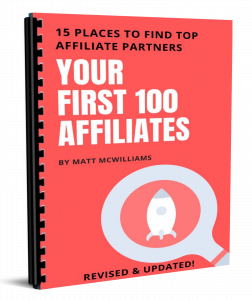 |
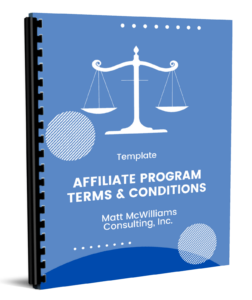 |
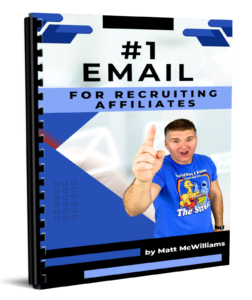 |
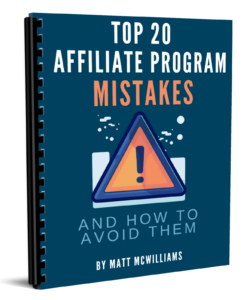 |
 |
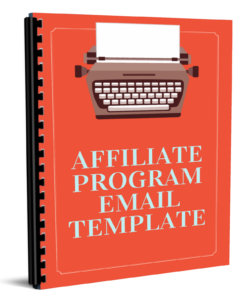 |
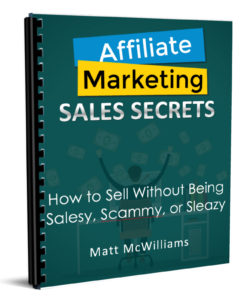 |
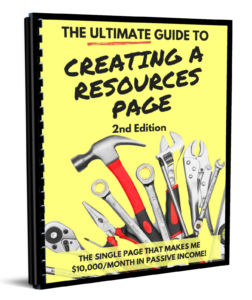 |
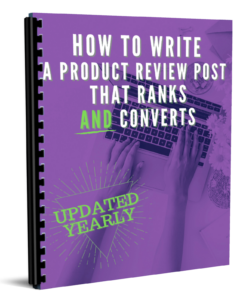 |

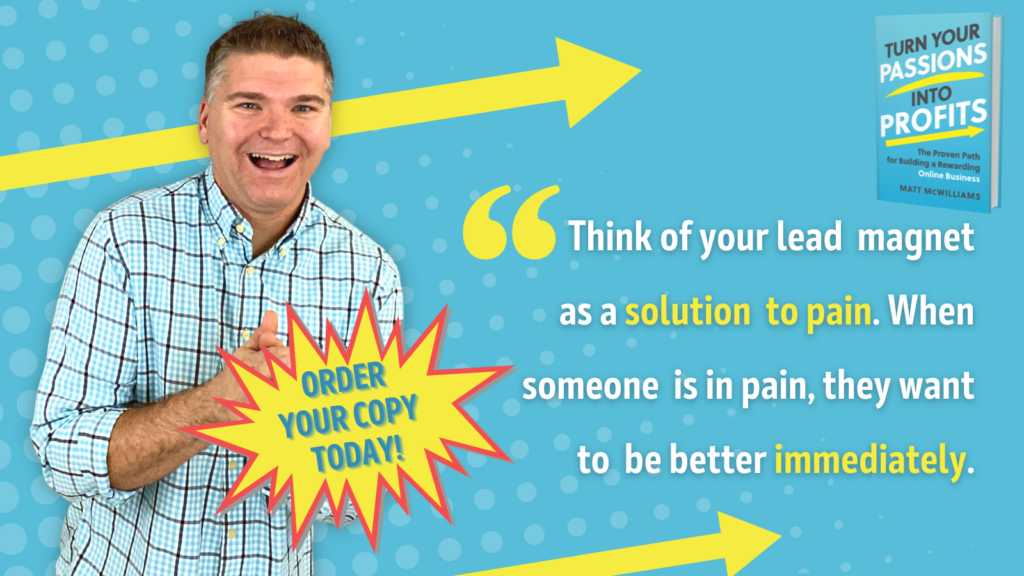
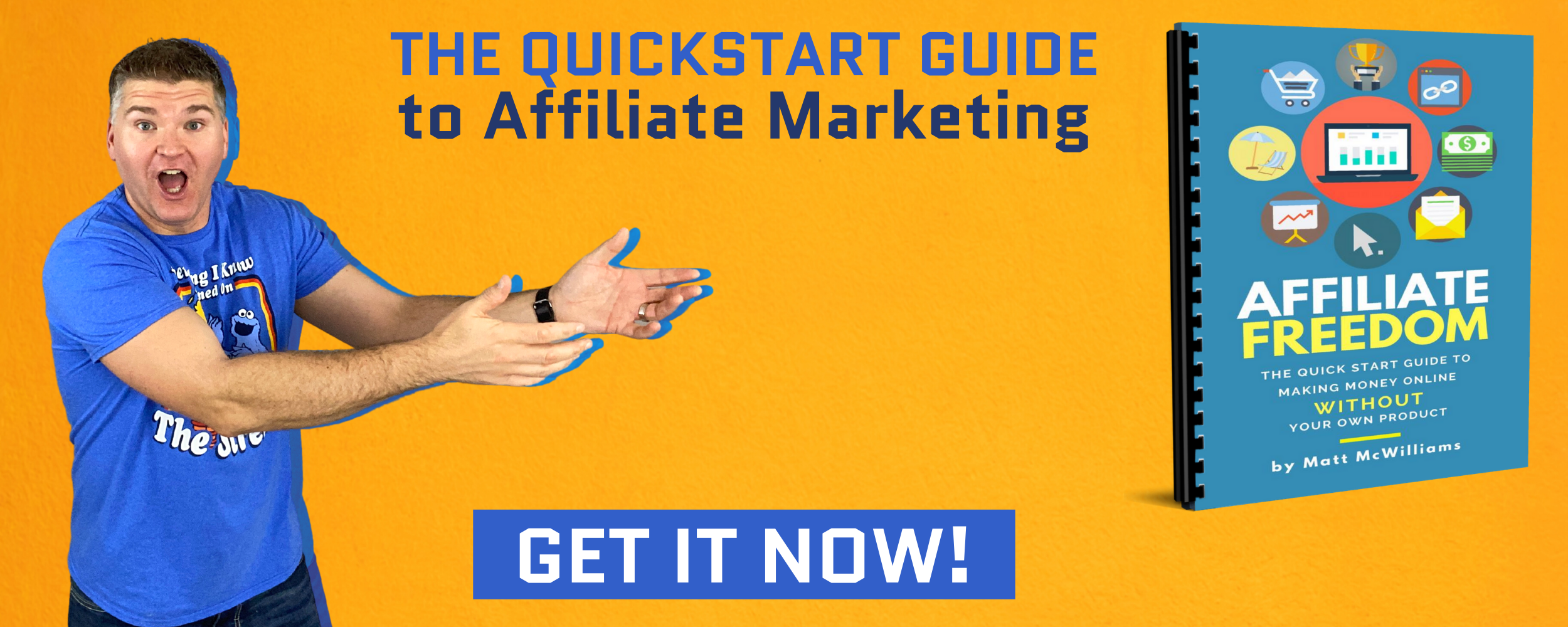
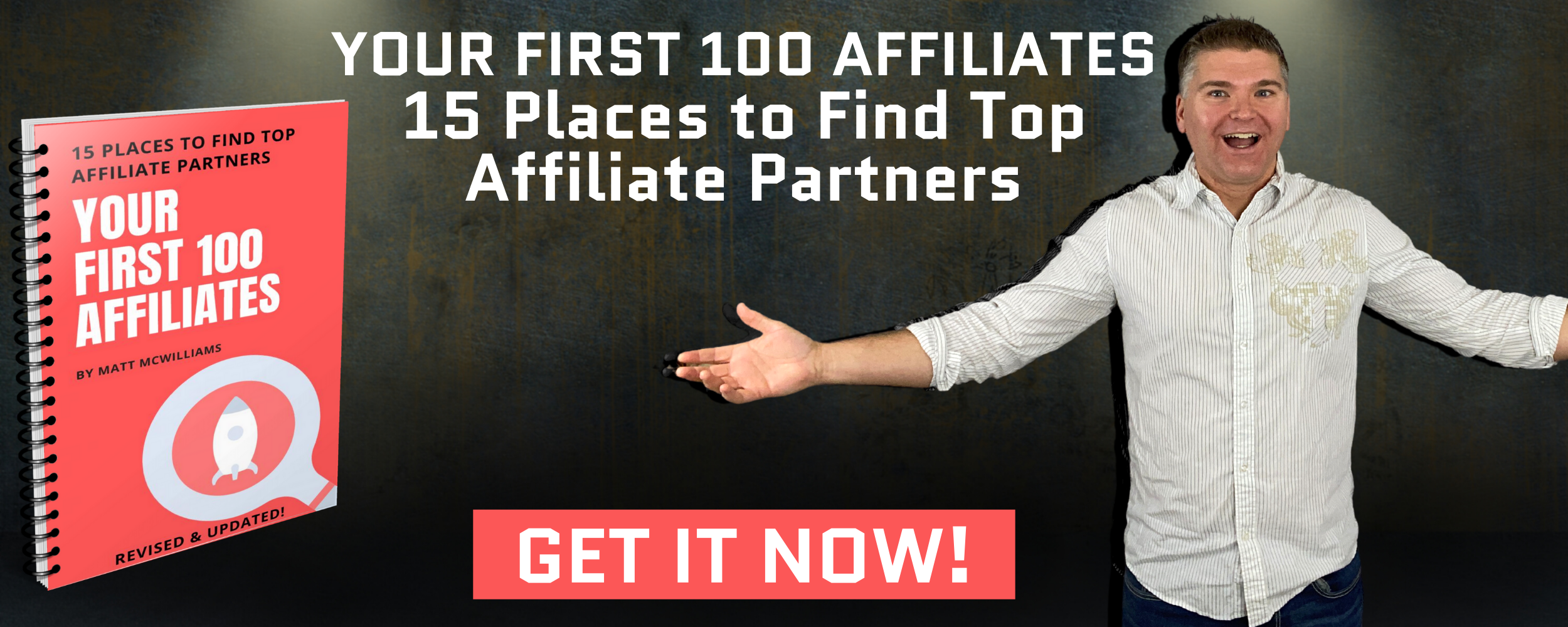
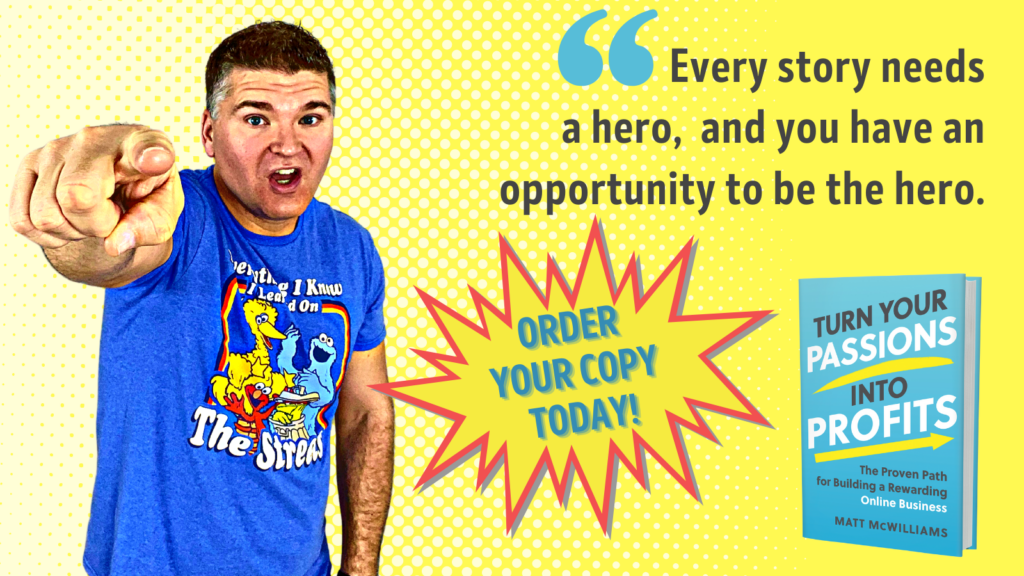

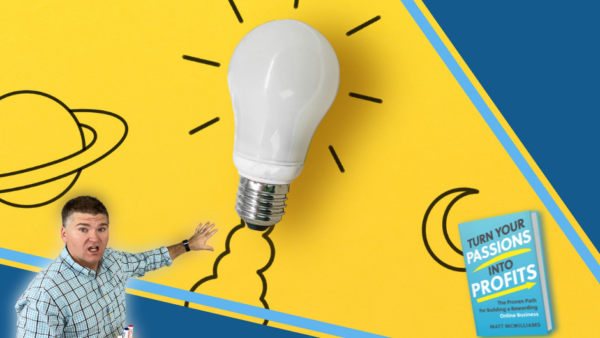



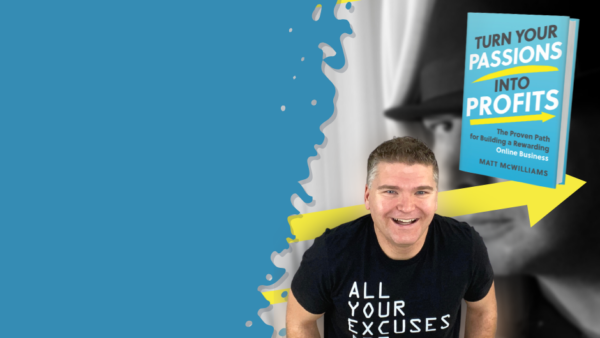
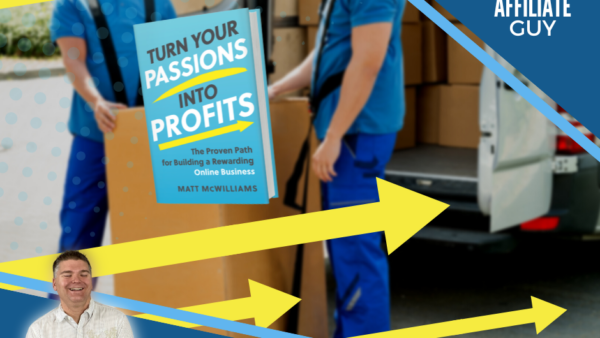
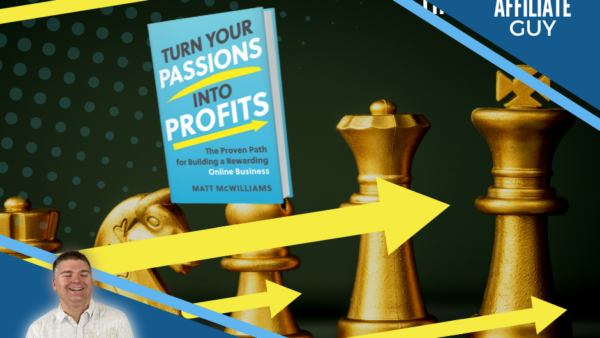
Why is the Kindle version on Amazon Canada so much more than on the US store? $30 is too much for an e-book, especially if US is paying $14.99. USD is not worth 2x of CAD, the exchange rate is only 1.39 so the book should not be 2x.
Also if I buy it on the Canada store is it eligible for the pre-order bonuses or is that only for the US Kindle store?
That’s up to Amazon Mike. We don’t control the pricing there. Sorry!